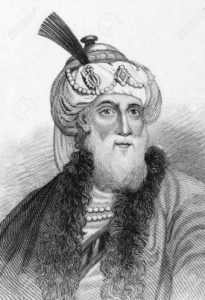On a popular level, some writers dismiss all evidence for Jesus as inconsequential and view him as a pure creation of his followers. Even apart from the dismissal of many lines of evidence, this skeptical approach, if followed consistently, would make much of history unknowable.[1] As in the case of other new movements, whether from disciples of Socrates, Muhammad, Buddha, or Joseph Smith, the life of the founder was initially of little interest beyond the circle of his own followers. The Dead Sea Scrolls revere the founder of their community, the Teacher of Righteousness, yet he appears nowhere outside their own literature.
Likewise, the first-century Jewish historian Josephus claims to have been a Pharisee, yet he nowhere mentions the Pharisaic sage Hillel, whom most subsequent Pharisaic traditions name as one of their central figures.[2] Meanwhile, the Judean king Agrippa I, whom Josephus depicts as prominent even in Rome, merits only the barest passing mention in a Roman historian covering the period.[3] Another major Roman historian devotes little space even to Herod the Great.[4]
By the same criterion of relevance, the earlier Greek historian Herodotus neglected not only Judea but Rome.[5] And Josephus himself, despite his prominent role in the Judean war and as an interpreter of Judea for the gentile Greco-Roman world, merits no interest in later rabbis (who in fact show greater interest in Jesus).
This is not to imply that non-Christian reports about Jesus are altogether absent. Most scholars today recognize that the first-century Judean writer Josephus, who wrote about John the Baptist and Jesus’s brother James, also wrote about Jesus himself.[6] Josephus treats Jesus as a sage and wonder-worker executed by the governor, probably with the complicity of some of Jerusalem’s elite.[7] Many scholars argue that an early Arabic version also confirms the key points about Jesus that scholars have reconstructed as original (before scribal tampering) in Josephus’s account.[8] Possibly as early as 45 years after Jesus’s crucifixion, a Syrian philosopher named Mara bar Sarapion speaks of Jews executing their wise king, bringing judgment on Judea. (He probably heard this report from Syrian Christians.)[9]

By the early second century, one historian includes a report, from just two decades after the crucifixion, about Jewish debates in Rome, apparently concerning the Christ.[10] Another, reporting the slaughter of vast numbers of Jesus followers in Rome roughly 34 years after the crucifixion, mentions that Jesus himself was earlier crucified under Pontius Pilate.[11] Rome itself had finally taken notice, because subsequent events had made Jesus’s movement a matter of local significance. In fact, the movement had become more significant in Rome than was the governor who executed Jesus. Although Jewish sources and an inscription mention Pilate,[12] this passage marks his only appearance in surviving Roman literature.
Most importantly and most early, we have considerable information about Jesus in Paul’s letters to his congregations, beginning perhaps eighteen to twenty years after Jesus’s execution. Paul was certainly a Christian, but by his own admission he began his involvement with the sect as one of its persecutors rather than as one of its friends. While focusing on Jesus’s crucifixion and resurrection, Paul also mentions other information about Jesus, including the Twelve, Jesus’s brothers, Jesus’s being mocked and abused, his burial, his teaching about divorce, his words at the last supper, and so forth. Paul also attests what seems to be a widespread early Christian consensus about Jesus’s role as Christ and exalted Lord. Nevertheless, Paul’s situation-occasioned letters do not supply anything like a biography of Jesus or even narrate any episodes from his life before the passion.
If you want to keep reading, consider purchasing my book, Christobiography.
This content is by Craig Keener, but edited and posted by Defenders Media, 501(c)(3).
[1] Against this approach, see e.g., Ehrman, Did Jesus Exist?. Detractors cannot complain FFF: (as those who wish to avoid ad hominem arguments should not, in any case) that Ehrman, an agnostic, is motivated in this argument by religious bias. FFF: See also Casey, Evidence (from a non-Christian perspective; although sometimes polarizing and attributing more than appropriate to individuals’ psychological backgrounds, he is probably right to observe that British academia tend to show a greater commitment to fairness than do some polarized U.S. contexts); Elliott, “Pseudo-Scholarship” (focusing on T. Freke and P. Gandy, and on 10 noting “factual errors, misstatements, and methodological misunderstandings on nearly every page”).
[2] See the comments by Israeli historian Flusser, Sage, 1; Flusser, “Ancestry,” 154; Flusser, “Love,” 154, compares the case of the Jesus movement with the followers of Simon Kimbangu or Joseph Smith. The analogies are of course inexact: for example, unlike Smith, Jesus left no written record; and unlike Jesus, Kimbangu did not train disciples (in the ancient Mediterranean sense). But the examples are sufficient for Flusser’s point.for Socrates, see Kennedy, “Source Criticism,” 130; for the principle that it is those who care about a figure who preserve his or her memories, see Schwartz, “Smoke,” 11.
[3] Tacitus Ann. 12.23.
[4] Dio Cassius 49.22.6; 54.9.3.
[5] Josephus Apion 1.60-66, esp. 66.
[6] On Josephus’s genuine mention of Jesus, see Meier, “Jesus in Josephus”; idem, “Testimonium”; Whealey, “Josephus”; idem, “Testimonium”; Gramaglia, “Testimonium”; Paget, “Observations”; Vermes, Jesus the Jew, 79; Charlesworth, Jesus within Judaism, 90-98; idem, “Jesus, Literature, and Archaeology,” 189-92; Dubarle, “Témoignage”; Ehrman, Prophet, 59-62; Theissen and Merz, Guide, 64-74; Van Voorst, Jesus, 81-104; Niemand, “Testimonium.”
[7] Josephus Ant. 18.63-64.
[8] See Agapius in Charlesworth, Jesus within Judaism, 95-96; Hilarion, Beginning, 11-refs (noting Pines, Version, 16); but see Whealey, “Testimonium,” esp. 587-88.
[9] Theissen and Merz, Guide, 76-80.
[10] Suetonius Claud. 25.4; see Keener, Acts, 3:2697-2711, esp. 2708-11; Keener, “Edict.”
[11] Tacitus Ann. 15.44. FFF: Second-century authors also lampoon or criticize the Christian movement and its founder; see e.g., Lucian Peregrinus 11; cf. Celsus in Origen Cels.
[12] See e.g., Philo Embassy 299, 304; Josephus Ant. 18.35, 55-64, 87-89, 177; War 2.169-75.